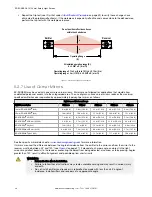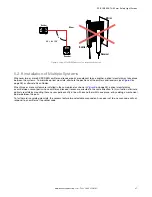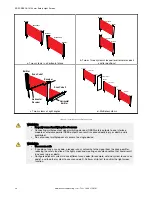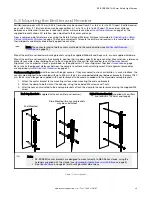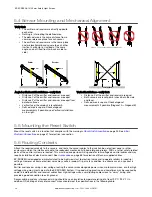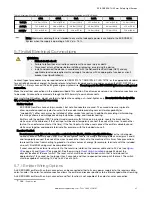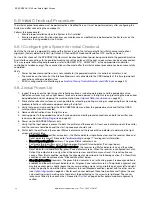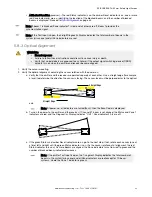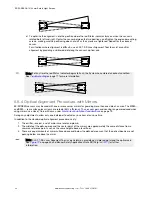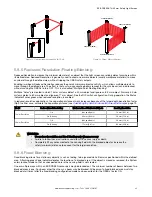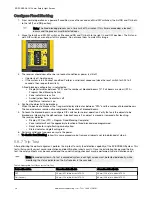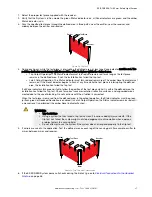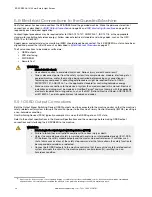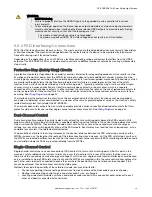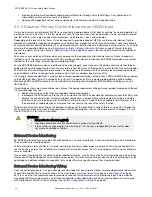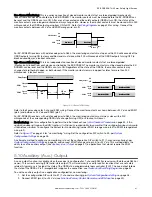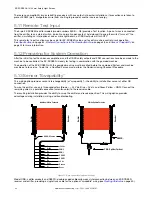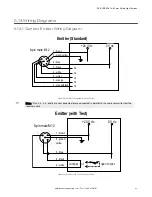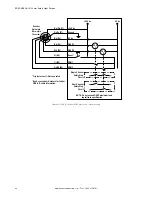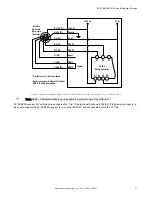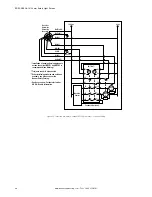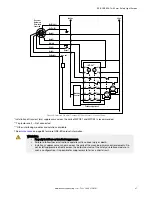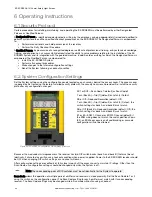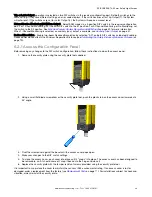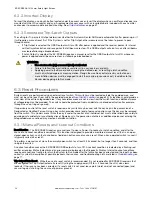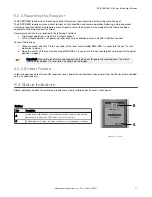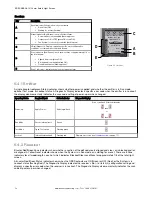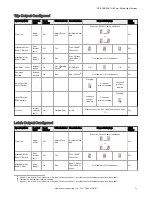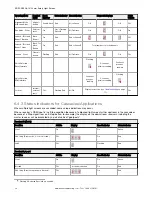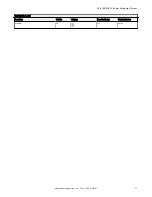
• Properly installing multi-conductor cabling and multiple wires through strain relief fittings. Over-tightening of a
strain-relief can cause short-circuits at that point.
• Using positive-opening or direct-drive components, installed and mounted in a positive mode
5.9.3 Machine Primary Control Elements and EDM Input
A machine primary control element (MPCE) is an electrically powered element that directly controls the normal operation of
a machine in such a way that it is the last element (in time) to function when machine operation is to be initiated or arrested
(per IEC 61496-1). Examples include motor contactors, clutch/brakes, valves, and solenoids.
Depending on the level of risk of harm, it may be required to provide redundant MPCEs or other control devices that are
capable of immediately stopping the dangerous machine motion, irrespective of the state of the other. These two channels
of machine control need not be identical (i.e., diverse redundant), but the stop time performance of the machine (Ts, used to
calculate the separation distance, see
Calculating the Safety Distance (Minimum Distance)
on page 19) must take into
account the slower of the two channels. Refer to
on page 46 or consult the machine manufacturer for additional
information.
To ensure an accumulation of failures does not compromise the redundant control scheme (cause a failure to danger), a
method to verify the normal functioning of MPCEs or other control devices is required. EZ-SCREEN provides a convenient
method for this verification: external device monitoring (EDM).
For the EZ-SCREEN external device monitoring to function properly, each device must include a normally closed, forced-
guided (mechanically linked) contact that can accurately reflect the status of the device. This ensures that the normally open
contacts, used for controlling hazardous motion, have a positive relationship with the normally closed monitoring contacts
and can detect a failure to danger (for example, contacts that are welded closed or stuck On).
It is strongly recommended that a normally closed, forced-guided monitoring contact of each FSD and MPCE be connected
on page 46). If this is done, proper operation will be verified.
Monitoring FSD and MPCE contacts is one method of maintaining control reliability (OSHA/ANSI) and Category 3 and 4
(ISO 13849-1).
If monitoring contacts are not available or do not meet the design requirement of being forced-guided (mechanically linked),
it is recommended that you:
• Replace the devices so that they are capable of being monitored; or
• Incorporate the EDM function into the circuit as close to the MPCE as possible (for example, monitor the FSDs); and
• Employ the use of well-tried, tested, and robust components, and generally accepted safety principles, including
fault exclusion, into the design and installation to either eliminate, or reduce to an acceptable (minimal) level of risk,
the possibility of undetected faults or failures that can result in the loss of the safety function.
The principle of fault exclusion allows the designer to design out the possibility of various failures and justify it through the
risk assessment process to meet the required level of safety performance, such as the requirements of Category 2, 3, or 4.
See ISO 13849-1/-2 for further information.
WARNING:
• External Device Monitoring (EDM)
• Creating a hazardous situation could result in serious injury or death.
• If the system is configured for “no monitoring,” it is the user’s responsibility to ensure this does
not create a hazardous situation.
External Device Monitoring
EZ-SCREEN provides three possible EDM configurations: 1-channel monitoring, 2-channel monitoring, and no monitoring.
Their functions are described below.
The most common form of EDM is 1-channel monitoring; its primary advantages are simplicity of wiring and the ability to
use the Auxiliary output. The installation must prevent short circuits across the N.C. monitoring contacts and to secondary
sources of power.
Two-channel monitoring has the ability to detect additional failures, such as short circuits, and should be used when those
failures can not be designed out or reasonably be excluded. Two-channel monitoring is also the default setting and has the
advantage on additional diagnostic capability that can identify which specific element has slowed or failed.
External Device Monitoring Wiring
If not connected previously, it is again strongly recommended that one normally closed, forced-guided monitoring contact
of each FSD and MPCE be wired as shown in the monitoring circuit (see
on page
46). Pins 2 and 3 of the receiver connector provide connection for the external device monitoring input. External device
monitoring (EDM) must be wired in one of three configurations described below and this wiring configuration must agree
with the receiver’s EDM DIP switch settings (see
on page 48).
EZ-SCREEN
®
14/30 mm Safety Light Screen
40
www.bannerengineering.com - Tel: + 1 888 373 6767

